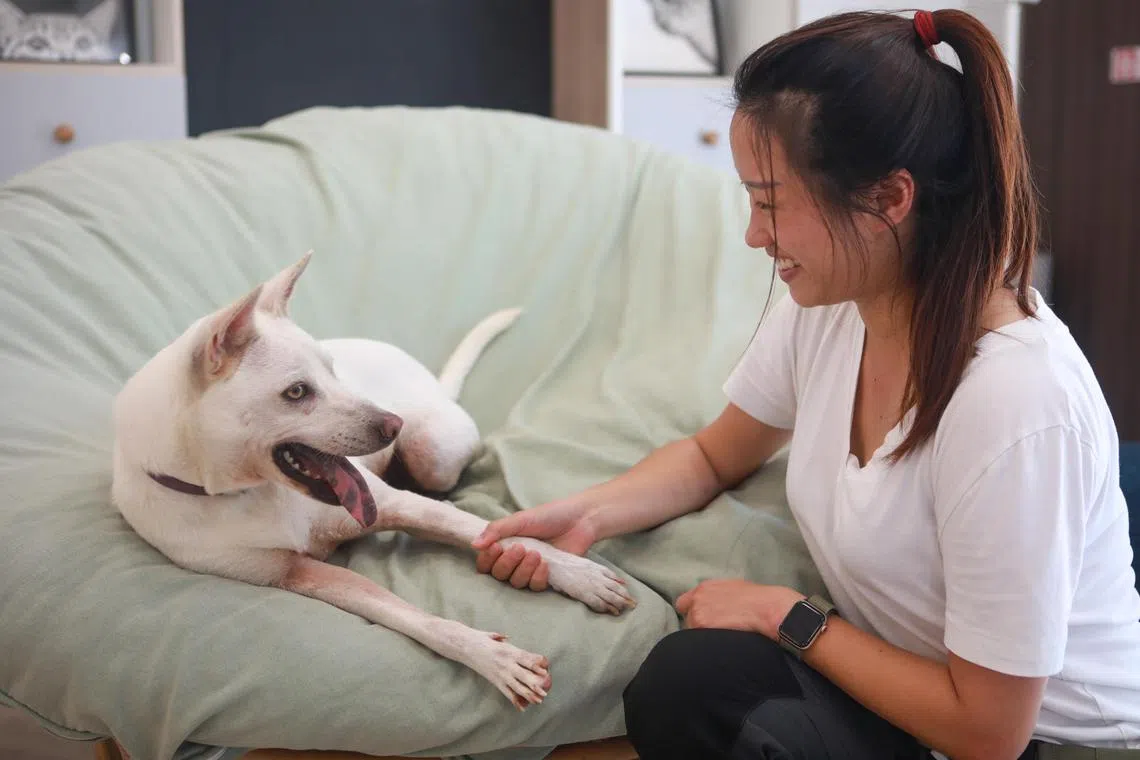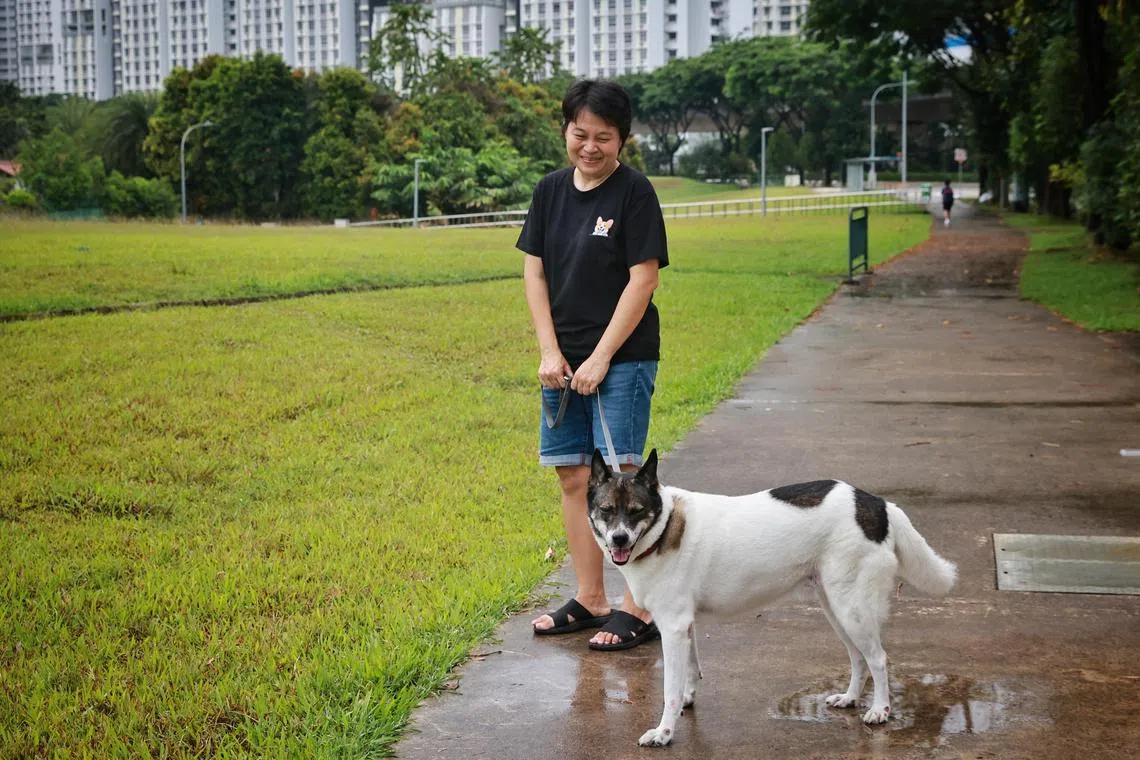From strays to pets: Giving rehabilitated animals forever homes
Sign up now: Get ST's newsletters delivered to your inbox

Madam Irene Lum with her adopted dog Rachel, who was saved off the streets and rehabilitated at the Centre for Animal Rehabilitation
ST PHOTO: JASON QUAH
Follow topic:
SINGAPORE – For her jubilee year when she turned 50, Madam Irene Lum got herself a “fifth daughter” – a canine named Rachel.
The stay-home mum has four girls aged between 12 and 21. Rachel, now 10, was adopted in November in 2022.
Rachel is a Singapore Special from the Centre for Animal Rehabilitation, the country’s first dedicated facility for animal behavioural rehabilitation.
Set up by the Animal and Veterinary Service (AVS) in Lim Chu Kang a year ago,
While it can take in 13 dogs at any one time, Rachel is just one of three dogs that have been rehabilitated and rehomed in the past year. The small number of rehomed dogs is partly due to the lack of adopters, said centre director Audrey Chen.
“Most people still prefer a cute pedigree than a rehabilitated dog,” said Dr Chen. “And not every home or lifestyle is suitable for the dog.”
The centre also has a socialisation programme for about 10 stray and rescued cats to help them better interact with people and other cats. This is noteworthy, as AVS is in the midst of a six-month public consultation exercise on whether cats should be allowed in Housing Board flats,
On whether the animal rehab centre is prepared to help more felines settle into HDB flats, AVS group director Chang Siow Foong said: “We will review holistically as part of the current cat management framework when the time comes.”

A cat at the Centre for Animal Rehabilitation. They undergo a socialisation programme to interact better with people and other cats.
ST PHOTO: RYAN CHIONG
Besides dog runs, activity rooms and compartmentalised kennels, the centre has dining and living rooms which help familiarise stray dogs with typical home environments, which include the sounds of household objects like vacuum cleaners.
Dr Chang added: “For a dog which has been living in the streets to immediately settle in a home is too jarring. We respect every animal as an individual, and the training is bespoke.”

Mr Webster Cheong, manager at the Centre for Animal Rehabilitation training five-year-old Eve at the dog run in the centre, on March 24, 2023.
ST PHOTO: RYAN CHIONG
There is no fixed timeline for a dog to be ready for adoption. It subscribes to the “least intrusive, minimally aversive” or Lima approach, which is more humane and effective in achieving behavioural change.
“Training an animal is like how we send our kids to school, and is part of responsible pet ownership,” Dr Chen said. “It is also welfare for the animal so that it will not be living in fear of being penalised for inappropriate behaviour.”
Once the dog is ready, AVS works closely with animal welfare groups to rehome the rehabilitated dog. The centre also provides adopters with a list of trainers, so that training for the dog will continue.

Ms Chong Qi Ai, a senior manager at the Centre for Animal Rehabilitation, with five-year-old Eve in the centre's living room.
ST PHOTO: RYAN CHIONG
Madam Lum, a first-time dog owner, chose a senior stray dog so that it can have a proper home to live out its best years.
“It’s meaningful to give these strays or abandoned animals a second chance,” she said. “Senior dogs have their nobleness and stability, and can be as enjoyable as the younger ones.”
She contacted the Society for the Prevention of Cruelty to Animals after seeing Rachel’s profile on its Instagram. It helped connect her with the centre, and their first meeting was in October 2022.
“Rachel was waiting for us when we arrived,” she recalled. “She sniffed my hand and warmed up to us immediately.”
Madam Lum found Rachel to be a good fit for the family as she is “a calm and sweet fur kid who takes to human interactions extremely well”.

Dog owner Irene Lum with her adopted dog Rachel.
ST PHOTO: JASON QUAH
She enjoys exploring the nearby park connectors in Punggol with Rachel.
“She gladly joins us for a slow jog, or even a spirited run,” she said. “She is more athletic than we had imagined, despite being a senior dog.”
To make up for Rachel’s lost time as a stray and to give her the best remaining years, the family includes healthy home-cooked food like salmon and vegetables in her meals, and takes her on car rides to different places.
“It’s a Cinderella story for Rachel,” she said. “Rachel also completes our lives.”

